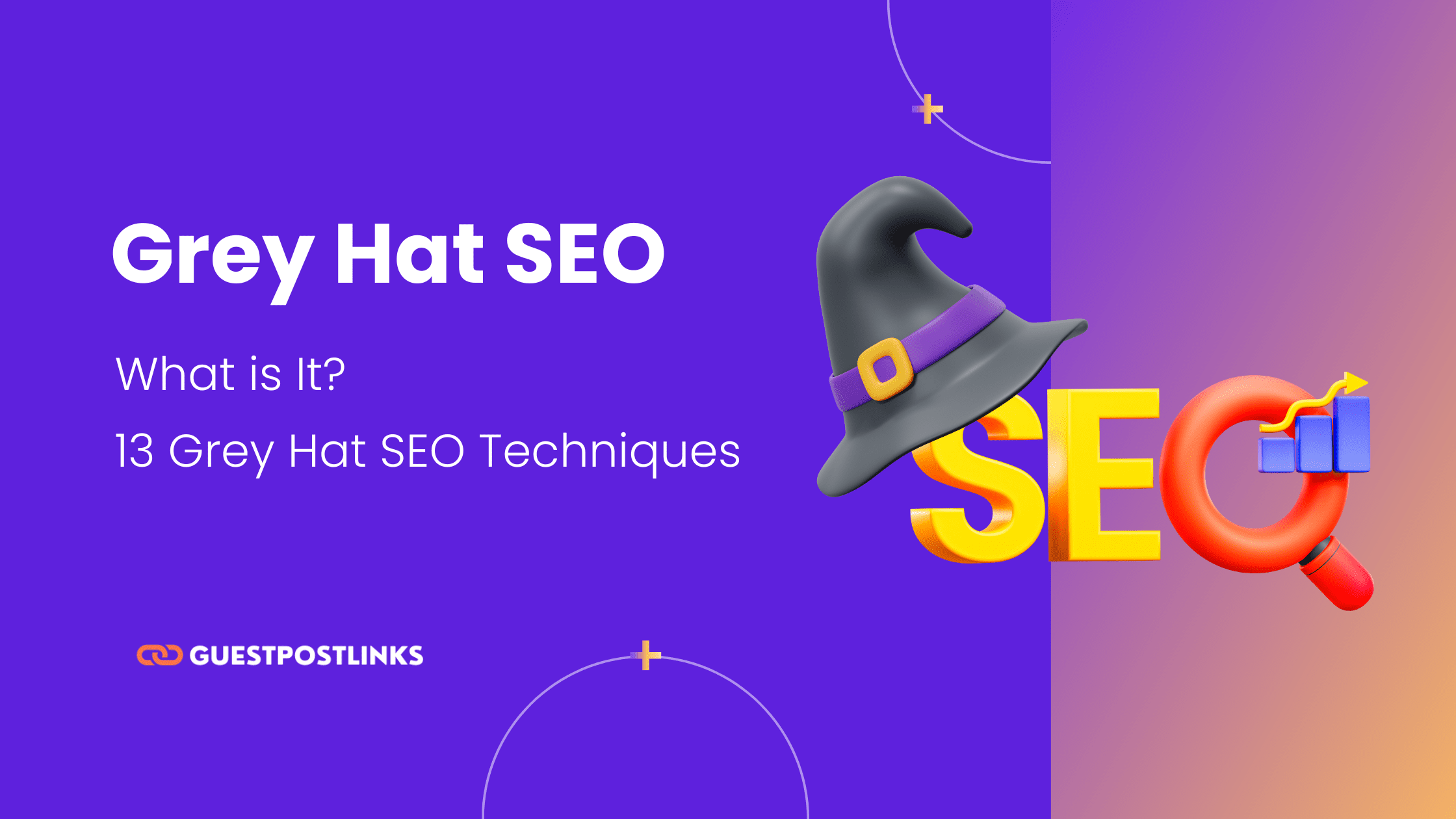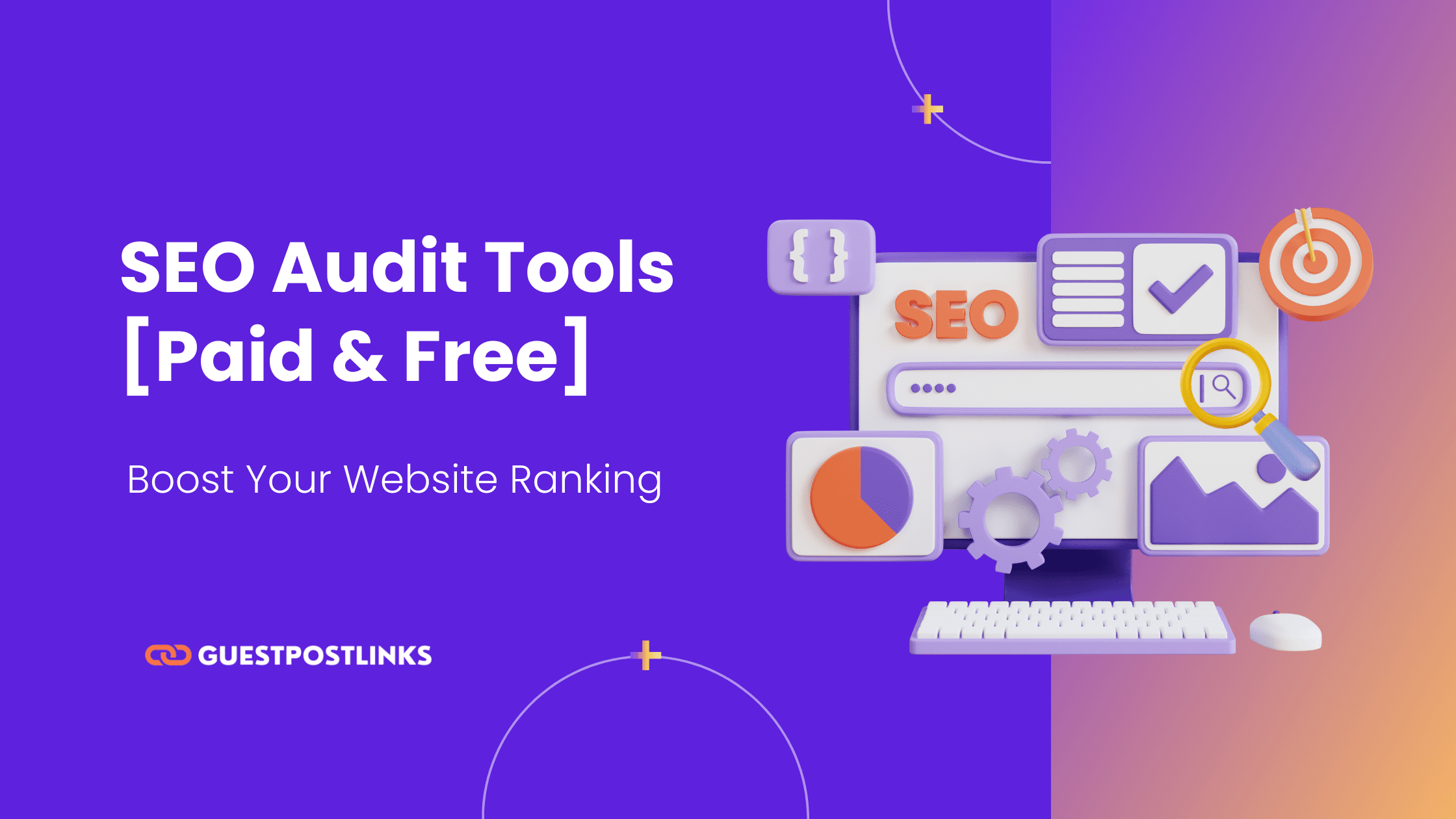Grey Hat SEO is a blend of white hat and black hat tactics, such as buying backlinks, using expired domains, or AI-spun content. It isn’t outright prohibited, but it carries significant risks. While it may deliver short-term ranking gains, search engines can still penalize sites for using these methods.
Many fall into a “grey area”, where they aren’t explicitly banned but still carry potential risks. This is what we call grey hat SEO.
The problem is that many marketers and business owners unknowingly use these tactics, thinking they’re safe. But in reality, grey hat strategies can put websites at risk of algorithm updates, manual penalties, or even complete de-indexing if abused.
That’s why it’s important to understand:
- What grey hat SEO really is in 2025
- Which techniques fall into this category
- The risks and rewards of using them
- Safer alternatives recommended by SEO experts
By the end of this guide, you’ll know exactly whether grey hat SEO is worth the gamble or if you should stick to safer, sustainable strategies.
What Is Grey Hat SEO?
Grey hat SEO combines ethical tactics, such as quality content creation, with riskier practices like buying backlinks, domain redirects, or AI-spun articles. It’s not officially banned, but it isn’t fully safe either. These methods can deliver faster rankings but carry the risk of penalties if detected by search engines.
Common Examples of Grey Hat SEO
- Buying or exchanging backlinks
- Using expired domains to pass authority
- AI-generated content without proper editing or originality
- Over-optimized anchor text links
- Large-scale guest posting for SEO rather than authority building
White Hat vs. Grey Hat vs. Black Hat SEO
| SEO Type | Definition | Common Tactics | Risk Level |
| White Hat | Fully compliant with Google’s guidelines | High-quality content, natural link building, technical optimization | ✅ Safe |
| Grey Hat | Sits between ethical and manipulative tactics | Expired domains, link exchanges, AI-spun content, aggressive guest posting | ⚠️ Moderate |
| Black Hat | Directly violates Google’s rules for quick wins | Cloaking, keyword stuffing, hidden links, automated link farms | ❌ Very High |
Grey Hat SEO in 2025: What’s Changed?
Grey hat SEO is constantly evolving. What worked a few years ago may now be a penalty trigger, especially as Google’s algorithms become smarter at detecting manipulation. In 2025, several new trends and risks define the grey hat space.
1. CTR Manipulation & Behavioral Signals
- Marketers now experiment with click-through rate (CTR) manipulation, using bots or microtask platforms to boost clicks artificially.
- Google’s AI-driven ranking systems are better at filtering unnatural engagement, making this tactic riskier than ever.
2. AI-Generated Content & Spinning
- With advanced AI tools, spinning or mass-producing content has become easier.
- Google’s Helpful Content System can detect thin or unoriginal AI content, penalizing sites without human oversight and editorial review.
- Safe practice: use AI for drafting, but rely on expert editing for trustworthiness.
3. Expired Domains & Private Blog Networks (PBNs)
- Buying expired domains to redirect authority remains a grey hat favorite.
- PBNs are still used, but Google’s link spam update (2024–2025) now flags suspicious link networks faster.
- High risk: unnatural link profiles can trigger manual actions.
4. Guest Posting for Links
- Guest posting is still legitimate for brand exposure.
- But using it primarily for backlinks especially at scale remains firmly in grey hat territory.
- Google’s spam policies in 2025 emphasize intent: posts created solely for SEO are flagged as manipulative.
Grey Hat SEO Techniques
Grey hat SEO encompasses a variety of strategies, some of which may appear harmless at first glance while others sit on the edge of being outright black hat. To make sense of these practices, we can group them into three categories: moderately risky tactics, highly risky tactics, and newer, emerging strategies gaining popularity in 2025.
A. Moderately Risky Tactics
One of the most common grey hat practices is buying expired domains. When a domain with an established backlink profile becomes available, some marketers purchase it and redirect its authority to their own site. While this can provide a short-term ranking boost, Google’s Link Spam Update has made it much easier to detect manipulative redirects, which means the tactic is far less reliable than it once was.
Guest posting is another area where the line blurs. Writing articles on third-party websites is perfectly legitimate when the intent is to build brand authority or reach new audiences. However, when guest posting is done solely for the purpose of building backlinks especially at scale it becomes a grey hat technique. Google’s spam policies in 2025 are clear that intent matters, and content written just to generate links can result in penalties.
Anchor text optimization also falls into this category. It’s natural to use keyword-rich anchors occasionally, but consistently forcing exact-match anchor text across links creates an unnatural profile. Over-optimization is one of the easiest signals for algorithms to detect, putting sites at risk of losing rankings.
B. Highly Risky Tactics
Moving further into the grey zone are strategies that carry a much higher chance of triggering penalties. Paid link building is one of the most notorious examples. Directly buying backlinks has always been against Google’s guidelines, and in 2025, detection methods are more sophisticated than ever. While paid links may deliver quick ranking boosts, they also leave a clear footprint that search engines can trace.
Similarly, link exchanges and private blog networks (PBNs) are widely used but extremely dangerous. In a link exchange, two or more websites agree to trade links to manipulate authority. PBNs take this a step further by creating entire networks of websites designed solely to pass link juice. Both strategies are on Google’s radar, and penalties for them are often swift and severe.
Automated content syndication also belongs here. Republishing the same piece of content across multiple sites without added value may seem like an easy way to expand reach, but search engines now view this as duplicate content and treat it as spam. The result is often devaluation of the syndicated pages or, worse, a hit to the source site’s credibility.
C. Emerging Tactics in 2025
Finally, there are newer strategies that have gained traction thanks to advances in AI and user behavior manipulation. CTR manipulation is one such method. Some marketers hire microtask workers or deploy bots to artificially inflate click-through rates on search results. The idea is to trick Google into believing that a page is more relevant than it really is. However, with AI-driven ranking systems monitoring user behavior more closely, these tactics are easier to detect and riskier than ever.
AI rewriting and content spinning are also becoming common. Tools can now generate endless variations of an article, making it tempting for marketers to mass-produce content. But without human oversight and editorial review, these articles lack originality and depth, falling foul of Google’s Helpful Content System. The result is often a site-wide signal that lowers the visibility of all content, not just the AI-spun pieces.
The most dangerous of the emerging tactics is cloaked redirects powered by AI personalization. These methods serve different content to search engines than to human users, often tailoring versions of a page based on location, device, or browsing history. While this might look sophisticated, cloaking remains a direct violation of Google’s rules. If caught, it can lead to instant de-indexing.
Case Studies & Real-World Examples
Grey hat SEO is not just theory it has played out in real-world cases where big brands and smaller websites alike have faced penalties. These stories highlight both the short-term appeal and the long-term dangers of pushing SEO tactics into the grey zone.
The BMW Doorway Pages Penalty
One of the most famous examples comes from BMW’s German website. In 2006, Google caught BMW using doorway pages web pages stuffed with keywords designed to rank highly but redirect users to a different destination. While BMW wasn’t engaging in black hat link farming, the tactic clearly violated Google’s guidelines.
The result? Google temporarily removed BMW.de from its search index, a shocking penalty for such a global brand. Although the company quickly issued an apology and fixed the issue, the case became a warning sign for all businesses: even trusted, well-known brands are not immune to penalties when they cross into grey hat territory.
Guest Posting Abuse and Penalties
Guest posting is often considered a middle-ground tactic. When done for exposure and authority, it is legitimate. But when abused at scale publishing hundreds of low-quality articles across unrelated sites the risks quickly escalate.
A notable example occurred in 2014 when Google’s then head of webspam, Matt Cutts, publicly declared that guest blogging for SEO was “done.” Since then, countless sites have been hit with manual actions for over-optimized guest post campaigns. In many cases, the sites lost significant traffic overnight. The lesson here is clear: intent matters. Guest posting for links alone will eventually catch up with you.
Expired Domains and the Short-Term Win
Expired domain strategies are another common grey hat method. Imagine buying a domain with a strong backlink profile, then redirecting it to a money site. In the short term, this often works rankings spike as link equity flows through.
However, many SEO case studies show the same outcome: within months, Google’s algorithms catch on. The redirected authority is devalued, and the target site either loses its gains or, in worse cases, receives a penalty.
One marketer who shared his experience on SEO forums described how a domain redirect boosted rankings for three months before Google rolled out an update that not only erased the gains but tanked his site’s overall authority.
Risks vs. Rewards of Grey Hat SEO
Grey hat SEO has always been attractive to marketers who want faster results without going fully into black hat territory. The promise of quick wins at lower costs can make these tactics appealing, especially for businesses trying to compete in saturated niches. However, what seems like a shortcut in the short term often turns into a setback in the long run.
The key benefits of grey hat SEO are straightforward. It can help websites achieve rapid ranking boosts, often at a fraction of the cost of white hat strategies like digital PR or large-scale content creation. It can also provide a temporary competitive edge, helping sites outperform slower-moving competitors. But these gains come with serious risks.
Grey hat tactics often leave behind patterns that search engines can detect. When flagged, the consequences range from a manual penalty that lowers visibility to complete de-indexing, where a site disappears entirely from search results. Even if no formal penalty is applied, many of these methods deliver results that are unsustainable, with rankings slipping as algorithms evolve.
Grey Hat SEO: Benefits vs. Risks
| Benefit | Risk |
| Quick ranking boosts | Manual penalty from Google |
| Lower upfront cost vs. white hat SEO | Complete de-indexing |
| Short-term competitive edge | Unsustainable long-term strategy |
Should You Use Grey Hat SEO? (Expert Insights)
Grey hat SEO sits in a dangerous middle ground. While it can deliver faster results than traditional white hat strategies, the long-term risks make it an unstable foundation for business growth. Most reputable agencies and SEO experts now caution against relying on these methods in 2025.
Industry leaders have made their positions clear:
- Ahrefs explains that grey hat SEO can sometimes offer “a temporary ranking boost by combining legitimate content with manipulative backlink tactics.” However, they stress that these wins “rarely last and often attract penalties.”
- Techmagnate points out that while tactics like doorway pages and large-scale guest posting may look harmless, “Google is constantly updating its algorithms to detect such manipulations.” They warn that businesses often waste money on short-lived strategies that collapse when rankings are devalued.
- SearchSEO.io (2025) highlights the shrinking window for grey hat tactics. Their recent research shows that methods like expired domain redirects or CTR manipulation are now detected within weeks: “What used to work for six months may now be penalized in six weeks.”
The message from experts is consistent: white hat SEO is the only approach that truly scales and sustains rankings. Unlike grey hat shortcuts, ethical strategies are built around transparency, credibility, and long-term trust.
By focusing on:
- High-quality content creation
- Natural relationship-based link building
- Technical site improvements
…businesses can build an online presence that not only survives algorithm updates but benefits from them.
Alternatives to Grey Hat SEO
While grey hat SEO might look tempting for fast results, the reality is that sustainable growth comes from strategies that align with Google’s guidelines. Instead of chasing short-term wins that risk penalties, businesses should focus on approaches that build trust, authority, and long-term visibility.
One of the most effective alternatives is content marketing. By consistently publishing high-quality articles, guides, and resources tailored to your audience, you not only attract organic traffic but also position your brand as an authority. Content that demonstrates real expertise supported by data, case studies, and unique insights naturally earns backlinks and shares over time.
Another proven strategy is building genuine digital PR backlinks. Unlike buying links or using private blog networks, digital PR focuses on earning coverage from trusted websites and news outlets. This could involve creating original research, publishing surveys, or providing expert commentary that journalists and bloggers find valuable. These backlinks carry much more weight because they come from authoritative sources.
AI also has a role in SEO in 2025, but it must be used responsibly. Instead of relying on AI to churn out thin or spun content, marketers can use it to outline topics, brainstorm keyword clusters, and speed up drafts. The critical step is human oversight expert editing, fact-checking, and adding personal experience ensure the final product meets Google’s Helpful Content standards.
Finally, businesses should never underestimate the long-term benefit of authoritativeness (EEAT). Websites that demonstrate Experience, Expertise, Authoritativeness, and Trustworthiness are more resilient to algorithm updates. This means:
- Publishing content written or reviewed by experts.
- Being transparent about who authors content.
- Keeping information updated with the latest data.
- Providing original value rather than copying competitors.
Conclusion
Grey hat SEO may seem like an attractive shortcut, offering quick ranking boosts at a lower cost than white hat strategies. But as we’ve seen, these methods are unstable and carry serious risks. From guest posting abuse to expired domain redirects, the short-term wins often come at the expense of long-term stability. In 2025, Google’s algorithms are more advanced than ever, meaning penalties arrive faster and recovery is harder.
The smarter path is to invest in strategies that build trust, authority, and resilience. Sustainable SEO is not about tricking algorithms it’s about creating content and experiences that genuinely help users. Brands that focus on transparency, ethical practices, and EEAT (Experience, Expertise, Authoritativeness, and Trustworthiness) will not only survive future updates but thrive because of them.
FAQs
No, grey hat SEO isn’t illegal in the sense of breaking the law. However, it does violate the spirit of Google’s Webmaster Guidelines. That means while you won’t face legal issues, your website can still suffer penalties, devaluation, or even removal from search results if these tactics are detected.
Not always but the risk is high. Some tactics may work temporarily without drawing attention, but Google’s algorithms are now much better at spotting manipulative practices. If your site relies too heavily on grey hat strategies, you risk receiving a manual action or algorithmic penalty that damages your long-term rankings.
Grey hat SEO exists in the middle ground between white hat and black hat. Black hat methods like cloaking, keyword stuffing, or hidden links are clearly forbidden and usually punished quickly. Grey hat techniques, such as guest posting for backlinks or expired domain redirects, aren’t always explicitly banned but still carry significant risks.
The safest and most effective link building strategy in 2025 is to earn backlinks naturally through high-quality content and digital PR. Creating original research, insightful guides, or expert commentary encourages authoritative websites to link back to you. This approach builds trust, authority, and resilience against future Google updates.
No, Google doesn’t formally recognize grey hat SEO as a category. The term is used within the SEO industry to describe tactics that fall between white hat (compliant) and black hat (forbidden). From Google’s perspective, a tactic is either acceptable or it isn’t meaning anything “grey” could be penalized at any time.





 No publishers in the cart.
No publishers in the cart.